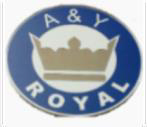This month, we examine some of the most common causes for accidents. By making you aware of them and offering tips, our goal is to help keep you and your passengers safe.
Distractions Create the Biggest Risk
Distractions are a part of every TLC-regulated driver’s work shift. Cell phone use, in particular, is now the largest cause of motor vehicle accidents in the world. It’s worth noting that laws pertaining to cell phone use are much more restrictive for FHV drivers than the general public.
- If you must use your cell phone, please pull off the road to a safe area. (Remember all the years you survived without a cell phone.)
- Ask frequent callers to reach you at home. Your concentration while driving is essential to the safety of you and your passengers.
- The moment you get inside your vehicle, start managing distractions. This will increase your level of concentration, productivity and chances of avoiding accidents.
- Distractions inside your vehicle include dispatchers, cell phones, GPS, the radio, passengers, newspapers, vouchers/receipts, coffee, cigarettes and food.
- Distractions outside your vehicle include other vehicles, pedestrians, messengers/delivery people, traffic, road conditions, construction, weather, sun glare, people soliciting at traffic signals and stop signs.
Reduce Stress With Proper Time Management
Stress can be dangerously distracting, and poor time-management skills can add tremendous stress to everyday life.
- Do not procrastinate. Allowing tasks to accumulate can lead to more stress.
- Take care of one task at a time.
- Do not waste important time on trivial, unimportant matters.
- Focus on the positive and don’t dwell on negatives.
- Set long-range and short-term goals.
- Set aside time for home, relationships, activities and yourself. Exercise, eat right and get plenty of rest.
Don’t Let Vandals Endanger Your Life
- Do not overreact to vandalism or a surprise attack.
- Do not chase after kids throwing snowballs or eggs at your vehicle. By placing your vehicle in reverse and chasing a vandal, you run a high risk of an accident. Vandals often want you to chase them or exit your vehicle, so they can attack you.
- Call the police if you are a victim of vandalism. Never take the law into your own hands.
Stop Sign Accidents
- Always come to a complete stop at a stop sign.
- Yield to any pedestrian approaching the intersection with a stop sign.
- Scan the entire area before proceeding from a stop sign.
- Yield to any vehicles approaching the intersection when you are at a stop sign.
- Yield to all vehicles when you are at an intersection controlled by more than one stop sign, regardless of who has the right-of-way.
- Always watch out for passengers exiting vehicles at stop signs.
- Always anticipate unsafe actions by other vehicles (such as u-turns) while you are stopped at a stop sign.
Speeding Accidents
Always obey the posted speed limit. Familiarize yourself with the speed limits and traffic laws of areas you frequent.
- Keep an eye out for speeding vehicles or reckless drivers. Be prepared to take defensive and evasive actions, whether those behaviors are close by or in the distance.
- Frequent and timely rear-view mirror checks will help alert you to speeding vehicles and allow you to signal and move out of the way.
- The faster a vehicle is traveling, the greater the risk of a fatality or serious injury in an accident.
- Speeding and unsafe lane changes not only cause accidents but road rage incidents.
- Speeding violations can add points to your driver’s license.
- Drivers with a history of excessive speeding violations pay more for insurance and can have their policy canceled.
- Passengers in NYC vehicles often report customer complaints to the TLC.
- Drivers delayed in traffic en route to a radio dispatched call should notify the passenger or base, and not speed to compensate for being late.
- Simply stated: DO NOT SPEED and AVOID SPEEDERS.
Rear End Collision Accidents
Rear-end collisions are generally caused by drivers tailgating and not maintaining a safe following distance. Always be aware of surrounding vehicles.
- Always maintain safe following distances. Add time/distance if you are tired or stressed.
- Be extra cautious on wet or icy roads, newly paved streets and at deer crossings.
- Always anticipate a taxi or FHV may stop without warning to respond to a street hail.
- Do not proceed when the traffic signal turns green without scanning the area to be sure vehicles are not making unsafe, last-minute turns in front of you.
- Do not allow your vehicle to be part of insurance fraud, which can occur if a vehicle in front of you stops for no apparent reason and the vehicle next to you (conspiring with the vehicle in front of you) prevents you from taking an evasive action.
- Always try to keep a clear lane on all sides when traveling on the highway.
- Beware of drivers texting or using a cell phone while driving.





